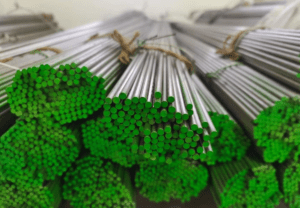In our daily lives, Inconel and Incoloy are two alloys that have gained immense popularity due to their exceptional properties and versatility in various industrial applications. While both alloys belong to the family of nickel-based superalloys, there exists distinct difference between Inconel and Incoloy in terms of composition, mechanical properties, corrosion resistance, and usage. In this blog post, we will delve into the differences between these two alloys to provide a comprehensive and authoritative comparison.

What is the difference between Inconel and Incoloy?
The Difference Between Inconel and Incoloy – Composition
Let’s start with the compositional differences. Inconel alloys, also known as nickel–chromium-iron alloys, are renowned for their high nickel content, often exceeding 50%. This nickel-rich composition, coupled with the presence of chromium and iron, confers upon Inconel alloys excellent corrosion resistance, particularly in oxidizing and reducing environments. On the other hand, Incoloy alloys are typically characterized by a lower nickel content and a higher proportion of iron and chromium. This balance of elements endows Incoloy alloys with good oxidation resistance and corrosion resistance in a wide range of temperatures, making them suitable for applications in both oxidizing and reducing atmospheres.
The Difference Between Inconel and Incoloy – Mechanical Properties
Moving on to mechanical properties, Inconel alloys excel in high-temperature environments. Their unique composition allows them to retain their strength and ductility even at extremely high temperatures, making them ideal for use in components that are subjected to severe thermal cycling. Conversely, Incoloy alloys, while also possessing good high-temperature properties, are more often utilized in applications that require a balance of corrosion resistance and mechanical strength at moderately high temperatures.
The Difference Between Inconel and Incoloy – Corrosion Resistance
Corrosion resistance is another crucial aspect that separates these two alloys. Inconel alloys are renowned for their outstanding corrosion resistance in a variety of aggressive environments, including those with strong acids, bases, and oxidizing agents. This resilience to corrosion makes Inconel alloys a prime choice for applications in harsh chemical processing environments and in the aerospace industry, where components are exposed to extreme temperatures and corrosive atmospheres. Incoloy alloys, while also exhibiting good corrosion resistance, are typically more suitable for applications that involve exposure to lower temperatures and milder corrosive media.
The Difference Between Inconel and Incoloy – Usage
In terms of usage, both Inconel and Incoloy alloys find widespread applications in various industries. However, there are certain areas where one alloy may be preferred over the other. For instance, Inconel alloys are widely used in the aerospace industry due to their exceptional high-temperature performance and corrosion resistance. They are commonly employed in the manufacture of turbine blades, combustion chambers, and other critical components that require sustained performance at extremely high temperatures. On the other hand, Incoloy alloys are often utilized in the chemical processing and petrochemical industries, where their resistance to corrosion and good mechanical properties at moderately high temperatures make them suitable for use in reactors, heat exchangers, and other equipment.
The Difference Between Inconel and Incoloy – Processing and Manufacturing Costs
Additionally, the processing and manufacturing costs of these alloys can also vary. The higher nickel content in Inconel alloys typically translates into higher material costs compared to Incoloy alloys. However, the choice between the two alloys should not solely be based on cost considerations but should also take into account the specific requirements of the application, such as the operating temperature, the nature of the corrosive environment, and the mechanical loads involved.
Conclusion
In summary, Inconel and Incoloy alloys, while sharing some similarities in their nickel-based composition, exhibit distinct differences in their chemical composition, mechanical properties, corrosion resistance, and usage. The choice between the two alloys depends on the specific requirements of the application and the desired balance of properties.
Thank you for reading our article and we hope it can help you to have a better understanding of the differences between Inconel and Incoloy. If you are looking for Inconel and Incoloy suppliers and manufacturers online now, we would advise you to visit Huaxiao Alloy for more information.
As a leading supplier of Inconel and Incoloy alloys from Shanghai China, Huaxiao Alloy offers high-quality Inconel and Incoloy products such as Inconel 600, Inconel 601, and Incoloy 800/800H/800HT at a very competitive price.



